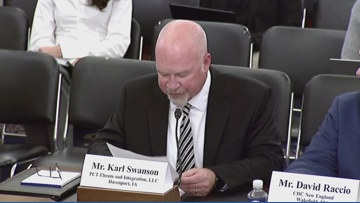
Sustainable Development Goals (SDGs) and Pre-K Curriculum Quality

Introduction
This report examines the quality of pre-K curricula for children aged three to five, with a particular focus on the Sustainable Development Goals (SDGs). The National Academies of Sciences, Engineering, and Medicine released this long-awaited report, which builds upon previous contributions to the early childhood field. The report aims to spur action and create a new vision for high-quality pre-K curricula that address the needs of specific subpopulations.
Committee’s Mandate
The 13-member committee, formed in 2022, was tasked with issuing recommendations to improve pre-K curricula. The committee specifically focused on addressing the needs of Black and Latino children, multilingual learners, children with disabilities, and children experiencing poverty. Notably, the committee’s mandate did not include evaluating or rating existing pre-K curricula.
Main Findings and Recommendations
The full report, spanning 376 pages, contains 19 conclusions and 15 recommendations. To provide a quick overview, the National Academies also released an interactive tool highlighting the report’s main takeaways. The committee’s vision emphasizes the importance of inclusive curricula that consider the perspectives, experiences, cultures, and languages of diverse children and families.
Role of Curricula in Pre-K Experiences
The report acknowledges that high-quality curricula alone cannot solve the challenges faced in early education. Inadequate funding, wages, workforce preparation and supports, recruitment and retention issues, and social and economic inequities also contribute to the current state of pre-K education. However, the report emphasizes that curricula play a critical role in providing enriching learning experiences for all children in pre-K.
Current State of Pre-K Curricula
The report highlights the need for improvement in the current state of pre-K curricula. Many public programs use non-evidence-based and culturally unresponsive curricula. The committee notes that comprehensive curricula intended to address all domains of children’s learning and development may result in smaller gains compared to domain-specific curricula. The report recommends transitioning to evidence-based curricula while still supporting the holistic development of children.
Long-Term Impact and Coherence
The committee acknowledges that even a high-quality pre-K experience does not guarantee future academic success. The report urges curricula publishers to document the experiences in grades K-2 and ensure coherence in the curricular vision across the transition from preschool to these grades.
Equity and Marginalized Communities
The report emphasizes equity and access to high-quality pre-K experiences, particularly for historically marginalized communities facing greater barriers. Recommendations include developing criteria to assess bias in curricula, reviewing curricula for potential biases, and ensuring representation of marginalized communities in study samples.
Implementation Challenges
Implementing the committee’s vision poses challenges due to the diverse settings and varying teacher qualifications in pre-K education. The report recognizes the need for a pre-K curriculum that can be implemented with fidelity by teachers with different levels of formal education.
Conclusion
The existence of this report signifies the potential for positive changes in children’s pre-K experiences. The next few years will be crucial in moving towards evidence-based curricula that reflect the unique experiences and identities of all young children attending pre-K programs.
SDGs, Targets, and Indicators
1. Which SDGs are addressed or connected to the issues highlighted in the article?
- SDG 4: Quality Education
- SDG 5: Gender Equality
- SDG 10: Reduced Inequalities
2. What specific targets under those SDGs can be identified based on the article’s content?
- SDG 4.2: By 2030, ensure that all girls and boys have access to quality early childhood development, care, and pre-primary education.
- SDG 4.7: By 2030, ensure that all learners acquire the knowledge and skills needed to promote sustainable development, including through education for sustainable development and sustainable lifestyles.
- SDG 5.2: Eliminate all forms of violence against all women and girls in the public and private spheres, including trafficking and sexual and other types of exploitation.
- SDG 10.2: By 2030, empower and promote the social, economic, and political inclusion of all, irrespective of age, sex, disability, race, ethnicity, origin, religion, or economic or other status.
3. Are there any indicators mentioned or implied in the article that can be used to measure progress towards the identified targets?
- Indicator for SDG 4.2: Proportion of children under 5 years of age who are developmentally on track in health, learning, and psychosocial well-being.
- Indicator for SDG 4.7: Extent to which (i) global citizenship education and (ii) education for sustainable development are mainstreamed in (a) national education policies; (b) curricula; (c) teacher education; and (d) student assessment.
- Indicator for SDG 5.2: Number of victims of human trafficking per 100,000 population, by sex, age group, and form of exploitation.
- Indicator for SDG 10.2: Proportion of people living below 50 percent of median income, by age, sex, and disability.
Table: SDGs, Targets, and Indicators
| SDGs | Targets | Indicators |
|---|---|---|
| SDG 4: Quality Education | 4.2: By 2030, ensure that all girls and boys have access to quality early childhood development, care, and pre-primary education. | Proportion of children under 5 years of age who are developmentally on track in health, learning, and psychosocial well-being. |
| SDG 4: Quality Education | 4.7: By 2030, ensure that all learners acquire the knowledge and skills needed to promote sustainable development, including through education for sustainable development and sustainable lifestyles. | Extent to which (i) global citizenship education and (ii) education for sustainable development are mainstreamed in (a) national education policies; (b) curricula; (c) teacher education; and (d) student assessment. |
| SDG 5: Gender Equality | 5.2: Eliminate all forms of violence against all women and girls in the public and private spheres, including trafficking and sexual and other types of exploitation. | Number of victims of human trafficking per 100,000 population, by sex, age group, and form of exploitation. |
| SDG 10: Reduced Inequalities | 10.2: By 2030, empower and promote the social, economic, and political inclusion of all, irrespective of age, sex, disability, race, ethnicity, origin, religion, or economic or other status. | Proportion of people living below 50 percent of median income, by age, sex, and disability. |
Copyright: Dive into this article, curated with care by SDG Investors Inc. Our advanced AI technology searches through vast amounts of data to spotlight how we are all moving forward with the Sustainable Development Goals. While we own the rights to this content, we invite you to share it to help spread knowledge and spark action on the SDGs.
Fuente: newamerica.org

Join us, as fellow seekers of change, on a transformative journey at https://sdgtalks.ai/welcome, where you can become a member and actively contribute to shaping a brighter future.






